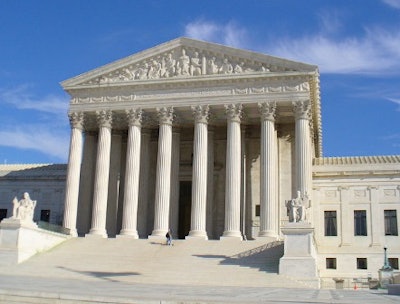 Supreme Court
Supreme Court
The ADC, which is managed by the College Board’s Higher Education Advocacy division and the EducationalCounsel LLC organization, developed the document, which “frames possible outcomes and likely responses and the ADC’s plans for post-decision communications.” A decision in the Fisher case is expected by the end of the Supreme Court’s 2012-13 term, which will be late June or early July.
Formed in the wake of the 2003 Supreme Court decisions in the University of Michigan cases, the ADC provides general policy, practice, legal and strategic guidance to colleges, universities and state higher education systems to support their implementation of diversity-related enrollment policies. The ADC is actively supported by 35 higher education institutions, three foundations and 10 other supporting organizations.
Publishing the nine-page “Preparing for the Fisher Decision” document is the latest effort by the ADC, which pursues its mission through in-person seminars and workshops, published manuals and policy papers and professional development videos. The document is divided into three parts: a background section introduces and provides overview of the Fisher case; an action focus section identifies the activities that institutions should be prepared to take when the decision is announced; and the messaging support section discusses messaging platforms for organizational responses to the decision.
“We have focused on the legal underpinnings, which are significant on a number of diversity-related questions, but as well on the policy, the strategy, the practice, the implementation and the execution” of the actions individual schools may pursue following the Fisher decision, says Art Coleman, managing partner and co-founder of EducationCounsel LLC.
In the guide’s background section, it notes that Fisher differs substantially from the University of Michigan cases, Grutter v. Bollinger and Gratz v. Bollinger, with the key question in the Texas case centering on “when the consideration of race in admissions is, in the first instance, necessary — and therefore justifiable.” The Michigan cases grappled with the “consideration of race and ethnicity as part of an individualized, holistic review process,” according to the guide.
The background section also outlines five potential outcomes of the Fisher case. “We’re looking at a context that’s potentially complex. Now [the Supreme Court] could come out with a very clean decision. We simply don’t know,” Coleman said.
“I think the more important motivator here, at least from my vantage, was simply making sure the higher education community [is] fully versed and attuned to the potential range of outcomes and the sets of issues that are certainly implicated by what we know at this moment in time being on the table,” he noted.
Bradley J. Quin, the executive director of Higher Education Advocacy and Special Initiatives at the College Board, said that while the guide should be read and considered by a wide array of academic officials, including those in student affairs divisions and general counsel offices, enrollment and admissions officers will be a key target for the publication.
“Clearly those in our primary audience are the people who are in the trenches, operating the admissions systems and operations on their campuses, responsible to the organization to enroll students, to enroll a class consistent with their mission and their goals and that would include a diverse class in most instances,” Quin said.
“We’ve tried the middle course and, as I’ve suggested, saying to them, ‘If you’ve been doing a good job with your diversity enrollment and your admissions practices, and you’ve stayed on the right side of the law, be aware of the potential shifts — some of them seismic, some of them not. And so just get prepared,’” he explained.
Dr. Douglas L. Christiansen, the vice provost for enrollment and dean of admissions at Vanderbilt University, welcomed the ADC’s action to publish “Preparing for the Fisher Decision.”
“I wanted to clearly state that this piece that the College Board and the EducationCounsel put out is a very positive and proactive document helping universities and colleges think about their admissions policies as it relates to affirmative action,” he said “A lot of institutions are so pressed with time and limited staff so something like [the guide] quickly contextualizes what’s in store for them.”





















